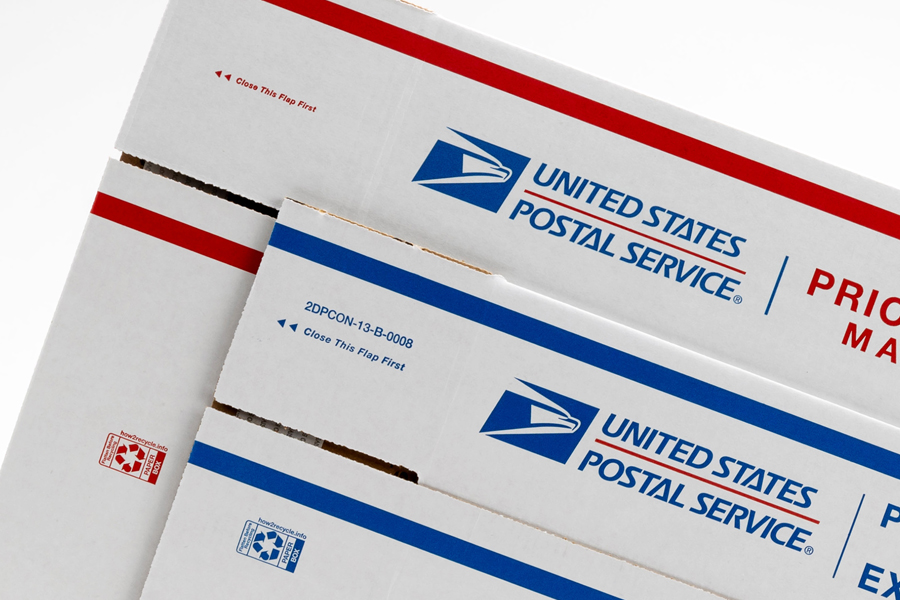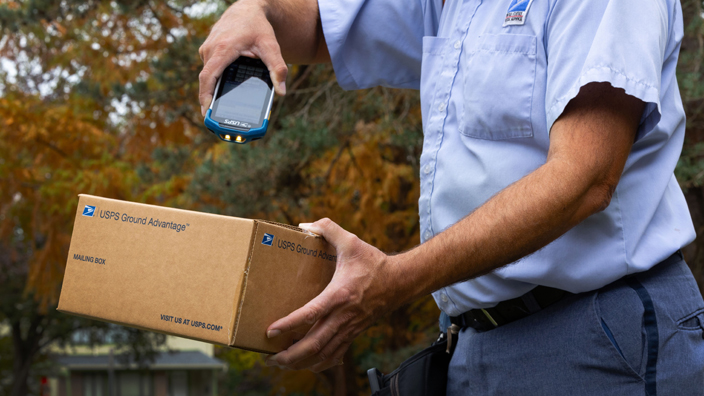The Postal Service has announced a set of new, ambitious sustainability targets for fiscal year 2030 to reduce greenhouse gas emissions and waste at every level of the organization’s operations.
The goals are the latest in a series of actions the Postal Service has taken to enhance sustainability across its network and day-to-day operations.
“The improvements we need to achieve in sustainability are an integral outgrowth of the broader modernization efforts we have undertaken through our 10-year Delivering for America plan,” said Postmaster General Louis DeJoy. “As we transform our operating processes and invest in new automation, new technologies and upgraded facilities and vehicles, we will generate significant efficiencies that reduce our costs, minimize waste across all functions of our operations and slash our carbon footprint.”
The Delivering for America plan focuses the organization on specific initiatives to continue to reduce $5 billion in operating costs by accomplishing the following:
• Reducing the Postal Service’s regional and local network transportation by at least $2.5 billion by aggregating volume in fewer facilities; moving mail and packages regionally in an integrated manner, eliminating thousands of trips each day; and using less air transportation.
• Reducing the organization’s processing, distribution and delivery costs by at least $2.5 billion by insourcing previously outsourced operations, consolidating operations out of random buildings, modernizing facilities, reorganizing operating plans and schedules, adding more sortation equipment, and improving operating tactics to increase throughput, gain productivity and increase asset usage.
All of these initiatives will significantly reduce carbon emissions by eliminating wasteful and unnecessary operating activities that have been deployed for almost two decades.
While accomplishing these operational cost and sustainability initiatives, USPS plans to grow its business by several billion dollars.
The new goals will help the Postal Service better meet the needs of the American people, according to Jennifer Beiro-Réveillé, the organization’s senior director of environmental affairs and corporate sustainability.
“Our customers and partners expect the Postal Service to be efficient and environmentally responsible, and I’m proud that our leadership team has developed meaningful sustainability goals and aligned them with our operational efficiency, service improvement and revenue growth initiatives,” she said. “These new targets help advance our commitment to being the greenest way for customers to mail and ship across the country.”
The Postal Service’s new sustainability targets are centered around three core areas: climate action, the circular economy and environmental awareness.
• Taking climate action. USPS is reducing greenhouse gas emissions across the organization by moving freight from air to ground transportation, optimizing delivery routes for trucks and carriers, and procuring reduced-emission and zero-emission vehicles.
By fiscal year 2030, USPS seeks to reduce Scope 1 and Scope 2 greenhouse gas emissions by 40 percent and reduce Scope 3 greenhouse gas emissions by 20 percent.
Scope 1 emission sources consist of stationary combustion, including building heating (such as natural gas, fuel oil and propane) and generators, mobile combustion (such as owned fleet vehicles and small equipment), on-site wastewater treatment, and fugitive emissions (such as refrigerants). Scope 2 emission sources include purchased electricity and purchased steam.
Scope 3 emission sources include contract transportation, employee business travel, employee commuting, contracted solid waste disposal and wastewater treatment, buildings with fully serviced leases, and transmission and distribution losses from electricity purchases.
• Supporting the circular economy. The Postal Service is focused on strengthening the circular economy by diverting waste from landfills and through the sustainable acquisition of materials. Additionally, USPS will increase its procurement of on-site renewable energy and renewable energy certificates.
By fiscal year 2030, USPS seeks to divert 75 percent of waste from landfills, increase recycled content of packaging to 74 percent, increase package recyclability to 88 percent and increase renewable energy use to 10 percent.
• Expanding environmental awareness. Throughout its work to create a greener Postal Service, the organization will continue to educate its 640,000 employees; local communities; and federal, state and local partners on its progress.
Additionally, the Postal Service seeks to ensure environmental policy requirements are communicated and incorporated into operations, and provide on-site and online training and tools that align with policy and regulatory requirements to 100 percent of relevant USPS employees.
These targets are the latest in a series of actions the Postal Service has taken during the past three years to enhance sustainability across the organization.
Recent actions include:
• Beginning the rollout of the nation’s largest electric vehicle fleet. Modernizing the Postal Service’s mail delivery fleet is a critical part of the Delivering for America plan. Starting in early 2024, USPS will begin to introduce at least 66,000 battery-electric delivery vehicles into its fleet. The organization is also building a nationwide network of electric vehicle charging stations to rapidly deploy these emission-free vehicles.
This represents one of the largest commitments to vehicle electrification in the world. USPS will also continue to explore the feasibility of achieving 100 percent electrification for its delivery vehicle fleet.
Last month in Atlanta, the Postal Service debuted the first of tens of thousands of electric charging stations that will eventually be used to power zero-emission USPS delivery trucks.
• Establishing the USPS Environmental Council. In 2023, the Postal Service named four executives to a new panel to create a long-term environmental strategy, with the postmaster general serving as chair.
The Environmental Council will oversee the implementation of the newly announced environmental goals and objectives.
• Advancing a network transformation focused on sustainability. The Postal Service’s 10-year Delivering for America transformation and modernization plan provides the foundation for the organization to continuously improve the sustainability of its operations.
The environmental benefits of the Delivering for America plan will increase as the Postal Service moves forward with this transformation, and every improvement to its operation — from new facilities to improved transportation utilization and delivery route refinements — will help USPS reduce its carbon footprint.



